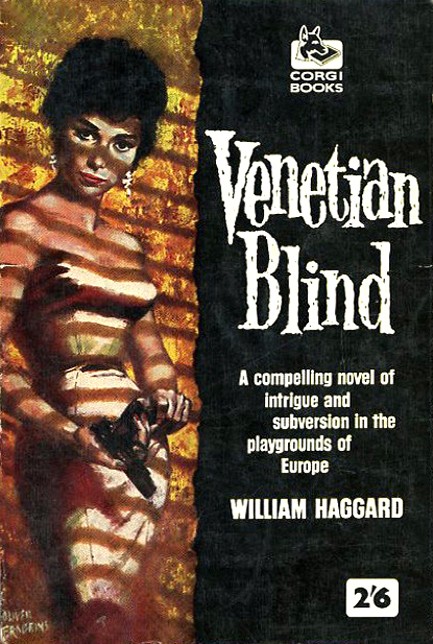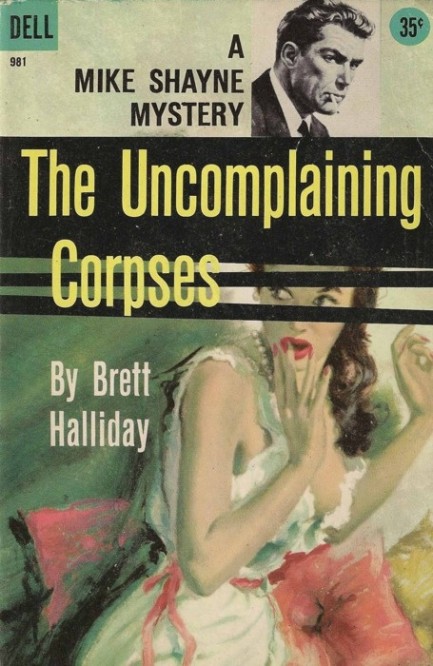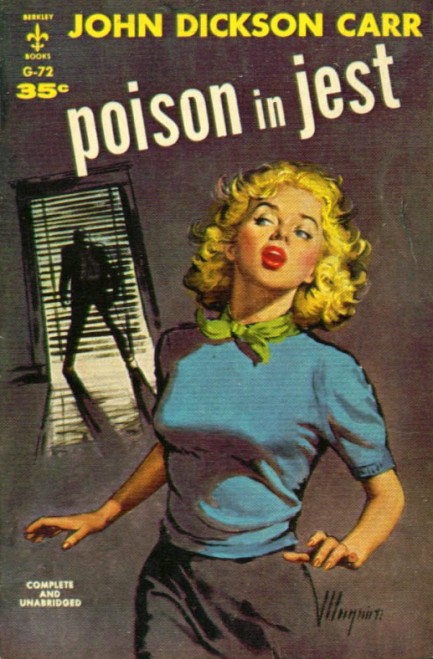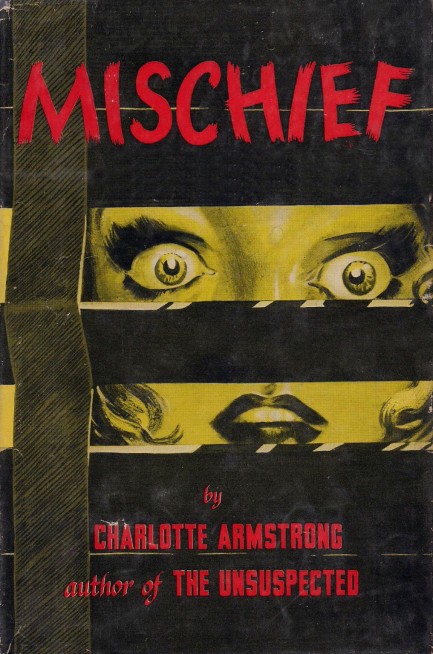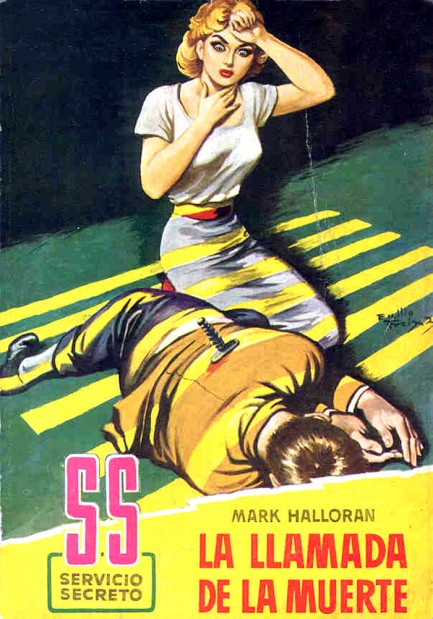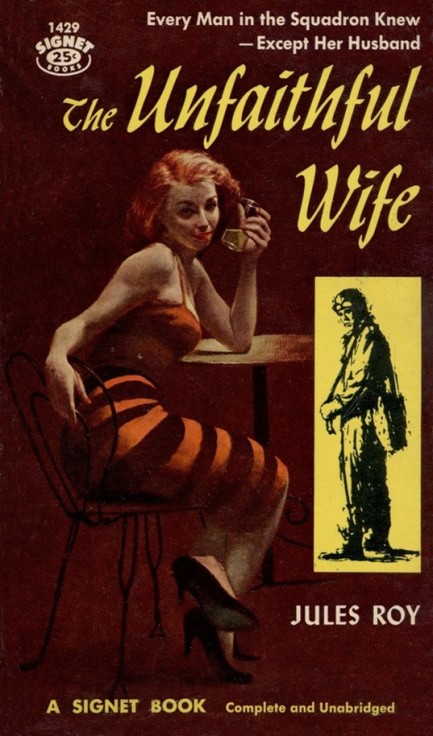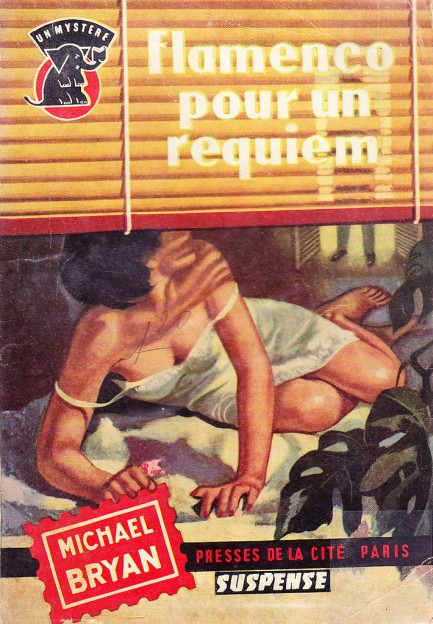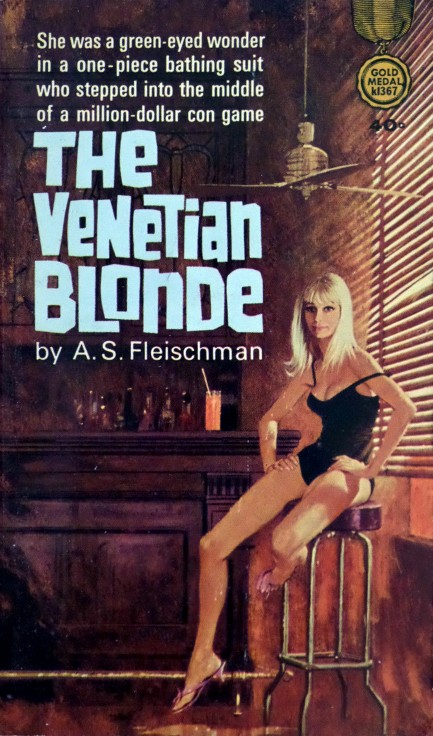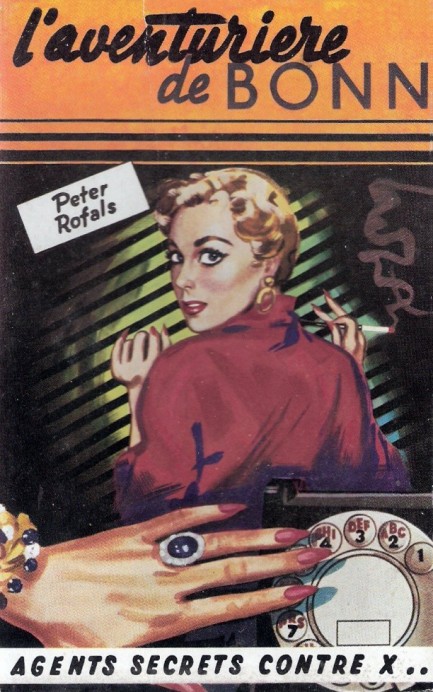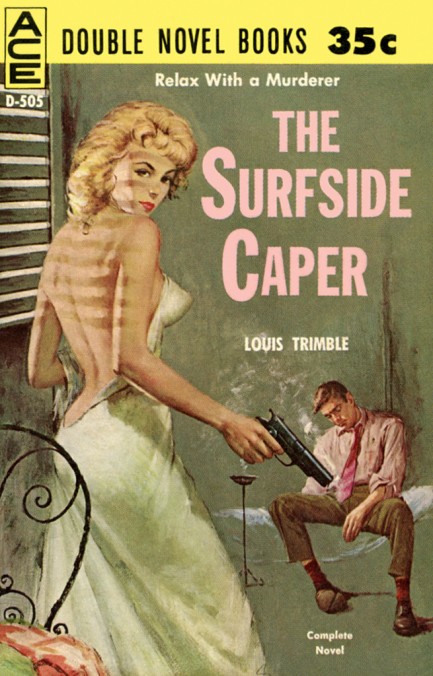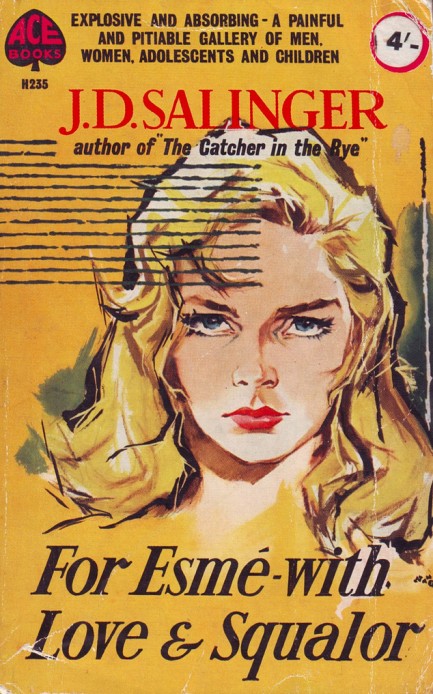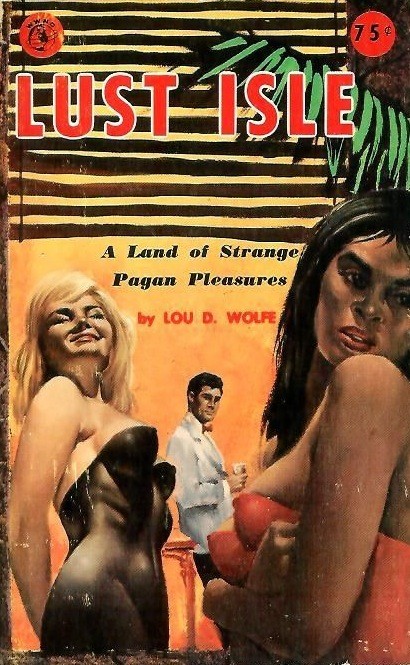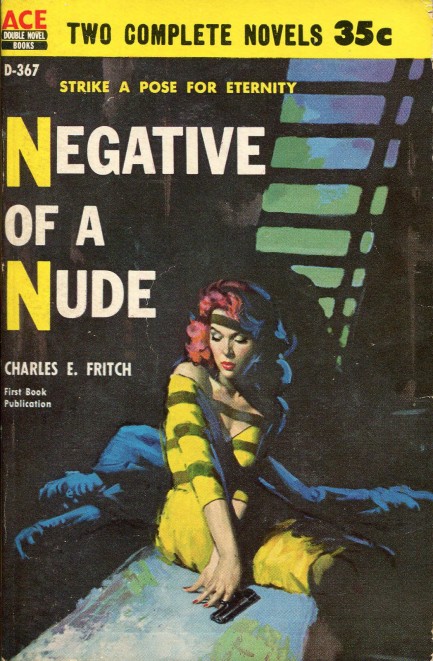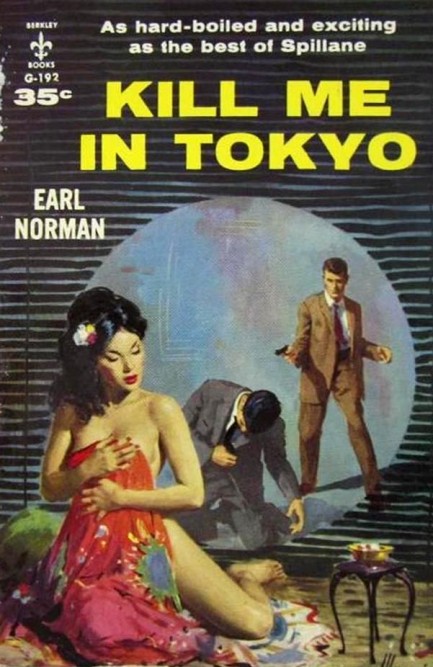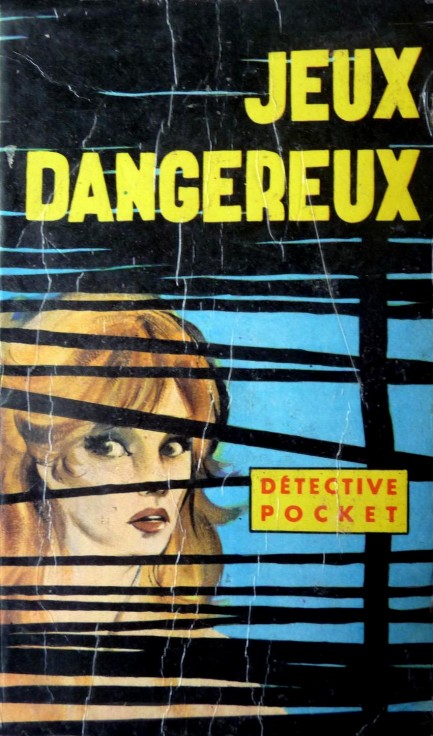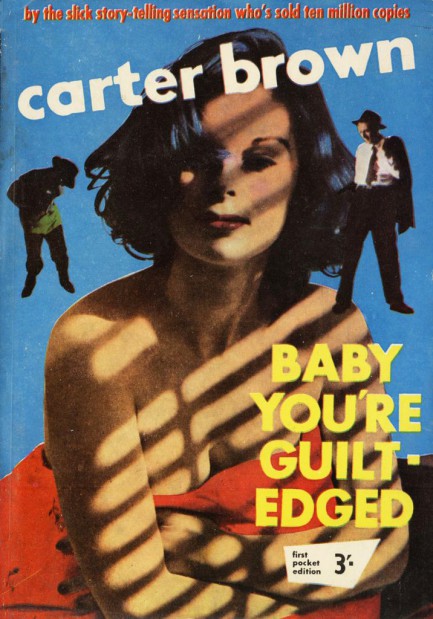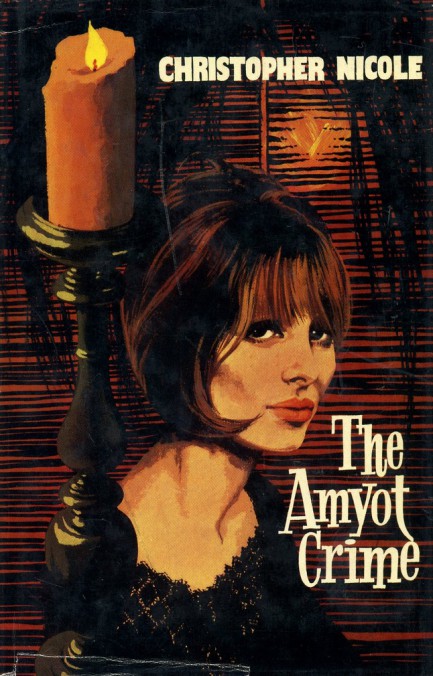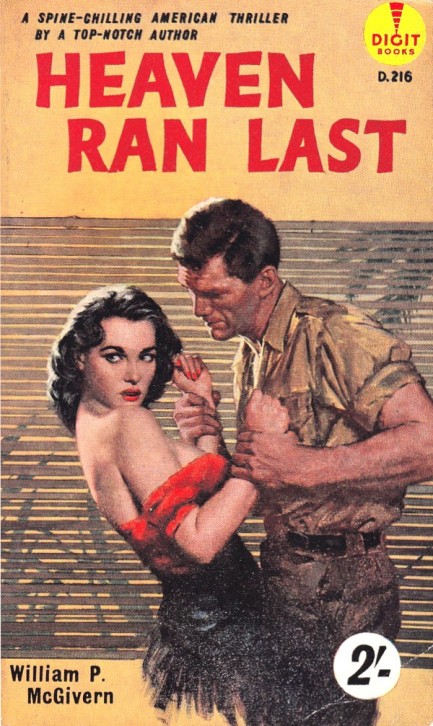| Vintage Pulp | Feb 4 2017 |

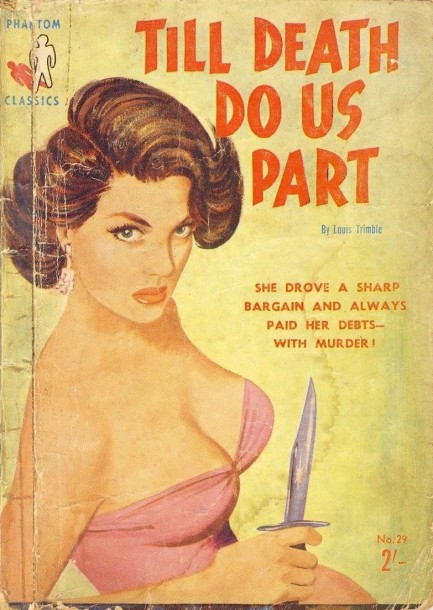
A gringo detective with an agency in Mexico City is hired to locate his crooked ex-partner, who has bailed with the agency's money, and now is causing trouble for the client. The PI takes the job, glad to be paid to track down his betrayer, and starts in the Mexican town of Rio Bravo where the partner immediately turns up dead. From there the hero delves into local corruption, crosses the border to Texas, uncovers a human trafficking ring, meets a cantina dancer named Arden Kennett, deals with a dangerous wife, watches murders pile up and the police begin to suspect him, and learns that knives can be thrown just as effectively as they can be brandished.
The book was published in the U.S. as an Ace Double in 1959 with Paul Rader art and bound with Charles Fritch's Negative of a Nude, but the rare edition above is from Aussie imprint Phantom Books and appeared in 1960. We can't identify the artist, which is an affliction we've been dealing with quite a bit of late. But don't blame us—as we've mentioned once or twice before, including just a few days ago, Phantom didn't credit art, possibly because much of it was copied from U.S. editions. Many of the covers do, however, look like the same hand, so hopefully someone will be able to ID the owner of that hand at some point in the future.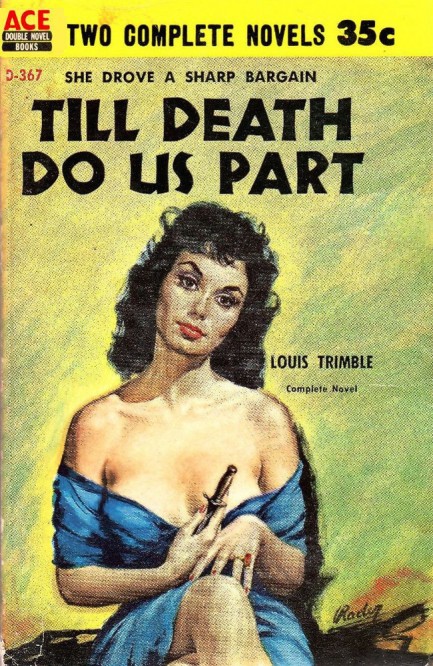
| Vintage Pulp | Feb 2 2014 |

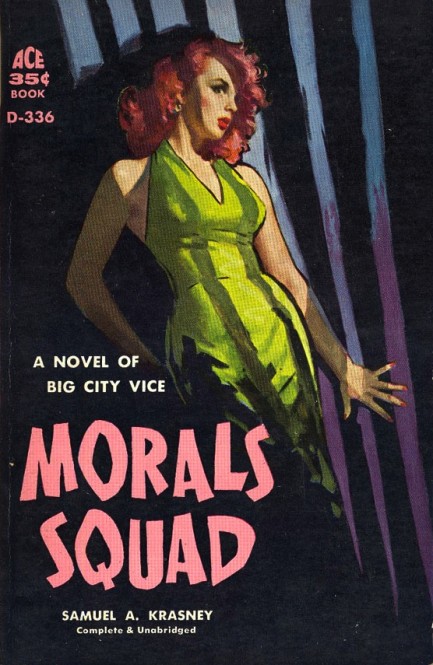
We’ve explored several cover motifs in pulp art, and another we’ve grown to appreciate is the use of venetian blind shadows or silhouettes. Always a dramatic addition to a cover, we could probably compile fifty of these, at least, but here are twenty examples. The artists—Emilio Freix, Robert Maguire, James Hodges, and others—use them to greater and lesser degrees, and opt for both literal and stylized renderings. For instance, the above cover from Maguire shows vertical shadows, but the sense of venetian blinds remains. As always, thanks to all the original uploaders.